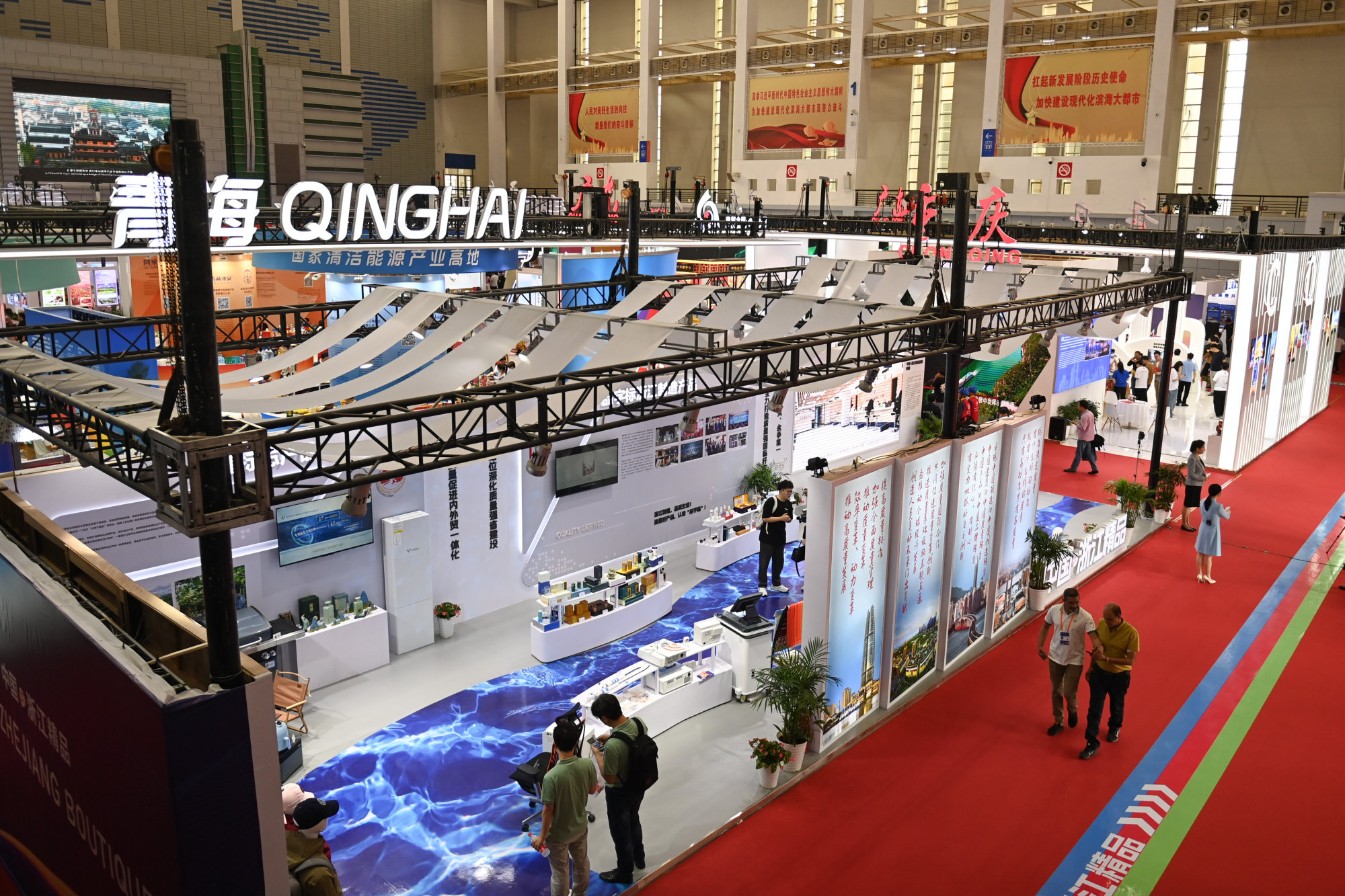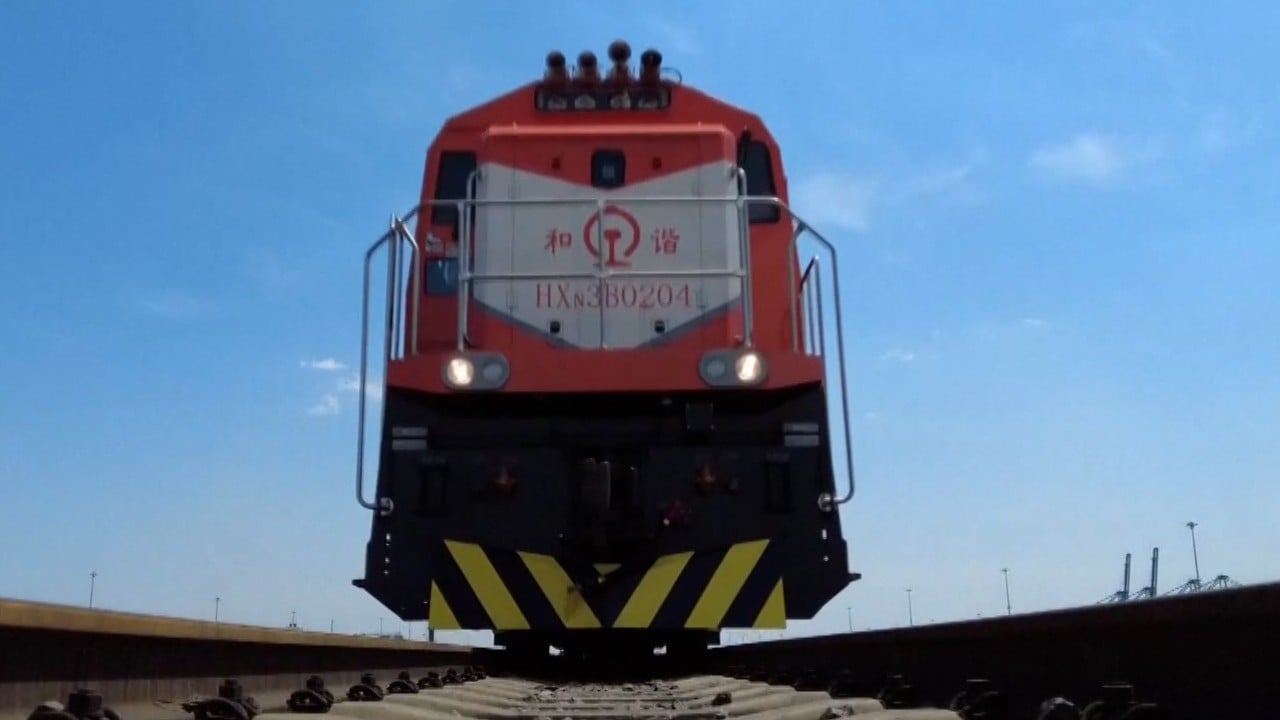
Have China’s central and eastern European trade ambitions reached the end of the line, and will bilateral deals fill the gap?
- Trade between the two regions and China has grown by an average of 8.1 per cent a year since mechanism was established
- But Shanghai-based expert says Beijing now realises it is not possible to deal with so many countries that are so different all at once
A big Polish chicken producer has been knocking on China’s door for eight years without selling a single drumstick, but hope springs eternal according to one of its representatives.
It has yet to surmount China’s strict import rules for meat and poultry and its tortuous application processes for agricultural imports.
“They gave optimism, they gave hope, but not a timeline,” Koztowski said after his latest meeting with Chinese counterparts.
“We are not giving up, we still need to try. China is a very big market.”
The Central and Eastern European Countries (CEEC), also known as the CEE, includes the likes of Bulgaria, Croatia, the Czech Republic, Poland and Romania, as well as Albania, Bosnia and Herzegovina and Serbia.
The Polish government said it had pushed for “a change in China’s approach” on meat and poultry, according to a statement issued after a meeting with Chinese officials in April.
China has yet to resume poultry imports from multiple countries where bird flu cases were once found, despite lifting official bans.
Wipasz was one of the more than 400 central and eastern European exhibitors at the Ningbo expo, which ran from May 16 to 20.
Chinese officials said it was 30 per cent bigger than the previous expo, held in 2021, but only a few countries – including Poland, Hungary and Slovakia – sent official trade delegations or set up national booths.
The lack of enthusiasm shown by other governments reflected their low expectations of gaining a foothold in one of the world’s largest consumer markets, which is now contracting despite efforts to spark an economic recovery.
Central and eastern Europe’s trade deficit with China has also been widening, with the value of exports to China down 4.9 per cent last year and the value of imports from China up about 13.8 per cent.
The latest quarterly trade data showed signs of improvement, with China’s first-quarter exports to central and eastern Europe up 10.3 per cent year on year, and its imports from the two regions up 7.3 per cent.
But the value of imports dropped by 12.2 per cent in April with the only growth recorded by Bulgaria, the Czech Republic, Poland, Romania and Montenegro.
‘Increasingly clear’ weak demand cools China exports, slowdown until late 2023
Poland, the Czech Republic and Hungary were China’s top central and eastern European trade partners last year, accounting for 59.6 per cent of imports from the two regions by value.
When Beijing proposed setting up a cooperation mechanism with central and eastern European countries in 2012, one of the aims was to address a trade imbalance by importing more goods from the two regions.
Beijing has called the mechanism a success because trade between the two regions and China has grown by an average of 8.1 per cent a year since it was established, and imports from the region have grown by an average of 9.2 per cent a year.
However, the diversity of traded items has remained limited. Machinery imports accounted for 72.5 per cent of the value of China’s imports from central and eastern Europe last year, with agricultural products contributing just 2.2 per cent.
In an online meeting with central and eastern European counterparts in February 2021, President Xi Jinping pledged to further boost the value and variety of imports.
The cooperation is currently at a key development era where we have to continue with what we started and develop it farther into the future
“China intends to import more than US$170 billion of goods from CEE countries in the coming five years,” he said.
“We need to speed up the entry of agricultural products from CEE countries into China and double CEE countries’ agricultural exports to China over the next five years.”
Jiang Yu, China’s special representative for China-CEEC cooperation, said at an academic conference held alongside the trade expo in Ningbo on May 17 that ties had entered a “key development era”.
“The cooperation is currently at a key development era where we have to continue with what we started and develop it farther into the future,” she said.
“We have to get used to what comes up in the relationship and continue to explore new mechanisms for cooperation.”

Russia’s invasion of Ukraine last year changed Europe’s security concerns and priorities. But while many central and eastern European countries grew more skeptical of China’s close relationship with Russia, Budapest and Beijing have basked in warmer ties.
Hungary was the “sole guest of honour” at the Ningbo expo, according to official Chinese statements. It was also the only country that had a national booth.
“We Hungarians do not consider China as if it was either a risk or a threat, but we do consider China as a country where cooperation brings a lot of profit and benefit,” he said, addressing a heated debate in Europe over China strategy and the degree of alignment with the United States.
Budapest has said the European Union was partly to blame for the war in Ukraine, and has faced criticism from the bloc for tightening control of civil society over the past decade.
During a visit to Budapest in February, China’s top diplomat, Wang Yi, said Hungary was a “good friend in Europe”.
Wang added that Hungary’s “friendly approach” towards China would not only benefit Hungary’s people but was also in accordance with the mutual interests of China and Europe.
During a visit to Beijing before the expo, Szijjarto announced that Hungary was expecting €3 billion (US$3.2 billion) of Chinese investment in its automotive sector, and foreign minister Qin Gang told him “bilateral relations have entered the best period in history”.
Hungary received US$7.6 billion in investment related to China’s Belt and Road Initiative last year – more than any other country – even as Chinese investment in Europe fell 22 per cent, continuing a multi-year downward trend.
I think Beijing finally came to realise that it is not really possible or not really meaningful to try to deal with so many countries that are so different all at once
A Shanghai-based academic who studies Europe said Beijing was likely to deal with countries in the region differently after some dropped out from the mechanism and geopolitical tensions arose from the war in Ukraine.
“The obvious change is that China’s foreign policy has returned to become more country-based and issue-based,” she said, requesting anonymity.
“It’s not that the mechanism would be cancelled, but nothing really meaningful would be done through it, and it would only remain as a symbol that underpins China’s eagerness to build relations with these regions.
“I think Beijing finally came to realise that it is not really possible or not really meaningful to try to deal with so many countries that are so different all at once. The differences in their geopolitical importance, their geographical locations and their trade volume with China are too diverse.
“Some people may say this is going back to the start, before the mechanism was set up, but at least now we have found out we should not lay our hopes on this path going forward.”



